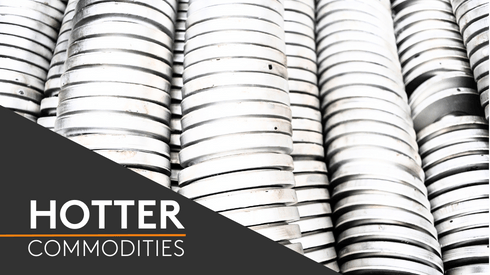Aligning various methodologies of calculating and reporting greenhouse gas (GHG) emissions in the steelmaking process has become a challenge in the push towards decarbonization of the industry, but there’s demand for aligning it.
“The American steel industry’s leadership on reducing emissions is well-known, but there are often disparate sources and avenues for calculating and reporting,” Kevin Dempsey, American Iron and Steel Institute (AISI) president and chief executive officer, told Fastmarkets. “There is a challenge that different groups calculate these numbers differently. They all use different scopes and so they get different results, and that can lead to comparisons between data collected by two different groups that really aren’t comparable.”
“There are multiple methodologies, frameworks and principles focused on steel decarbonization with inconsistencies in scope boundaries, emissions considered and treatment of off-gases, to name a few,” according to Shivakumar Kuppuswamy, policy and impacts director for ResponsibleSteel, a third-party provider of sustainability standards and certifications. “There has been a growing demand to harmonize, rather than reinvent methodologies, to mitigate this challenge, and the trends indicate greater alignment between different methodologies.”
“Based on what we hear from the steelmakers, there is a desire to not have a proliferation of standards,” Lachlan Wright, manager of climate intelligence from RMI, a nonprofit organization promoting green energy, told Fastmarkets. “There is a general desire to coalesce around one thing and that makes it easier for them, both on the reporting side, and also in terms of developing trust. Every time we talk to a steelmaker, they are interested in how harmonization can occur.”
Wright said he has noticed steel buyers also are increasingly recognizing the gaps among existing systems and the need for alignment.
A Nucor spokesperson told Fastmarkets this week that steel customers would benefit from a single, transparent global standard for steelmaking emissions.
Various Methodologies
In November, Washington-based AISI released its recommendations for GHG emissions calculation guidelines in the steel industry. The guidelines are designed to “provide consistent and comprehensive data across the industry on GHG emissions from steel production, with a focus on product-level disclosures and corporate-level reporting,” according to the association.
The association’s steel production methodology for GHG emissions calculation highlighted that:
- Calculations should include a comprehensive “cradle-to-gate” scope analogous to Scope 1 (direct emissions), Scope 2 (emissions from energy and raw materials used in production), and upstream raw materials, energy and transportation Scope 3 emissions
- Calculation of Scope 1 emissions should use the Environmental Protection Agency’s GHG Reporting Rule methodology for US-based facilities, with the addition of those facilities below the reporting threshold of 25,000 metric tons of carbon dioxide equivalent (CO2e) per year
- Emissions from the purchase of electricity should be based on local electricity grid factors and reflect renewable energy instruments in specified instances
- Emissions should be calculated at the product level for trade, procurement and environmental product declaration purposes, while a company-wide basis should be used for corporate reporting
The recommendations are not intended to be a formal industry standard, according to AISI, but a reinforcement of the efforts made by American and global steel producers and others developing GHG emissions calculation methodologies.
Brandie Sebastian, AISI director of sustainability, explained that while other organizations have rolled out decarbonization programs that establish a calculation approach and a benchmark by which emissions must be compared, AISI is solely setting out the calculation framework for quantifying the emissions without setting or requiring certain benchmarks or thresholds.
“We’re ensuring a more complete upstream emissions accounting, all the way to the product level to capture all the relevant processes in steelmaking,” she added.
In September, ResponsibleSteel launched a new global standard for the steel industry with a focus on responsible sourcing.
The US steel industry is facing potential Scope 3 emissions reporting requirements from the Securities and Exchange Commission, though representatives from the industry have voiced concerns about how the rule could create “perverse” incentives to import feedstock, like pig iron, from overseas producers with high carbon dioxide emissions.
Fastmarkets’ daily steel hot-rolled coil index, fob mill US was calculated at $32.04 per hundredweight ($640.80 per short ton) on Thursday November 17, falling by 64.66% from the $90.67 per cwt calculated on November 17, 2021.





